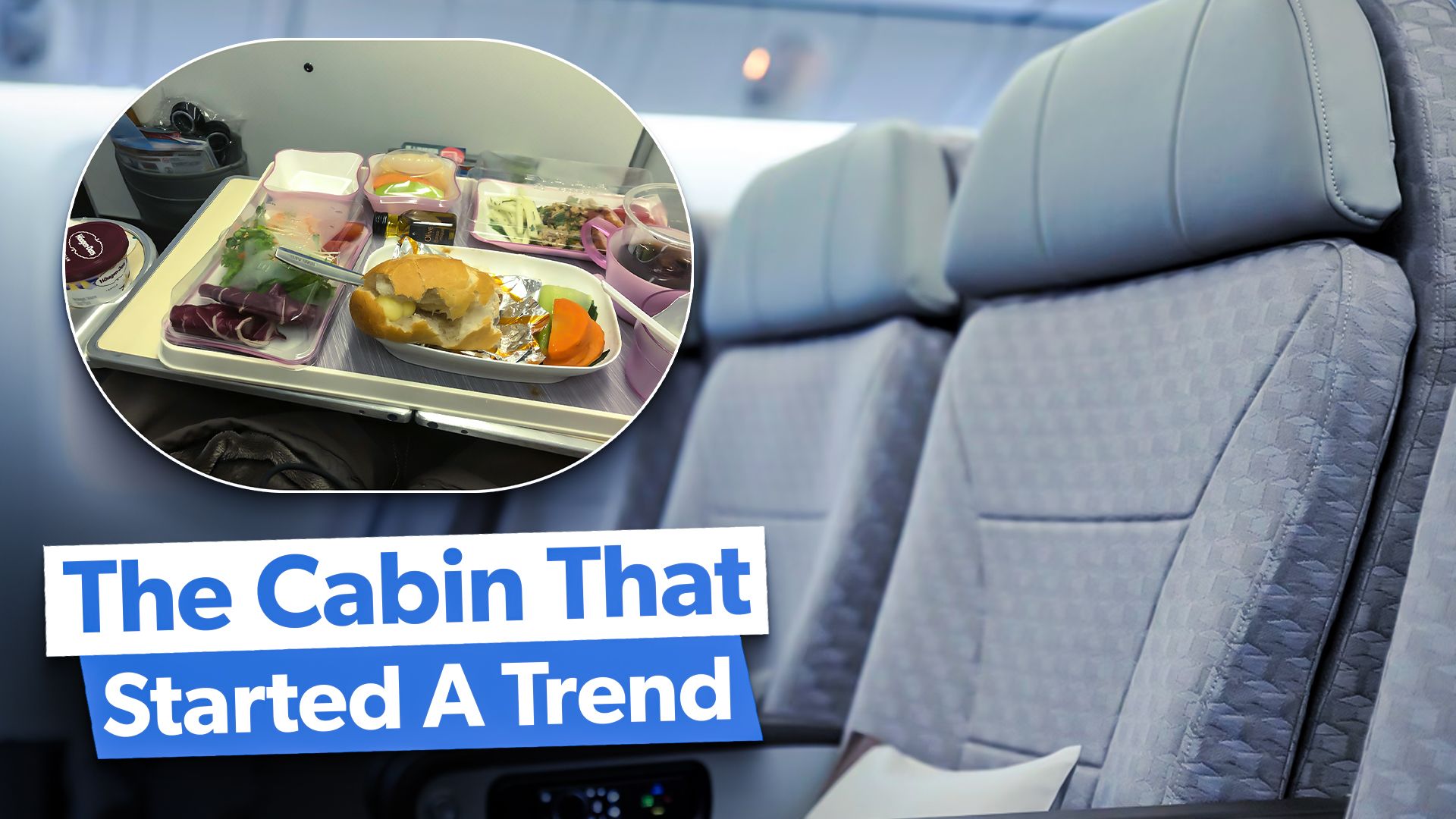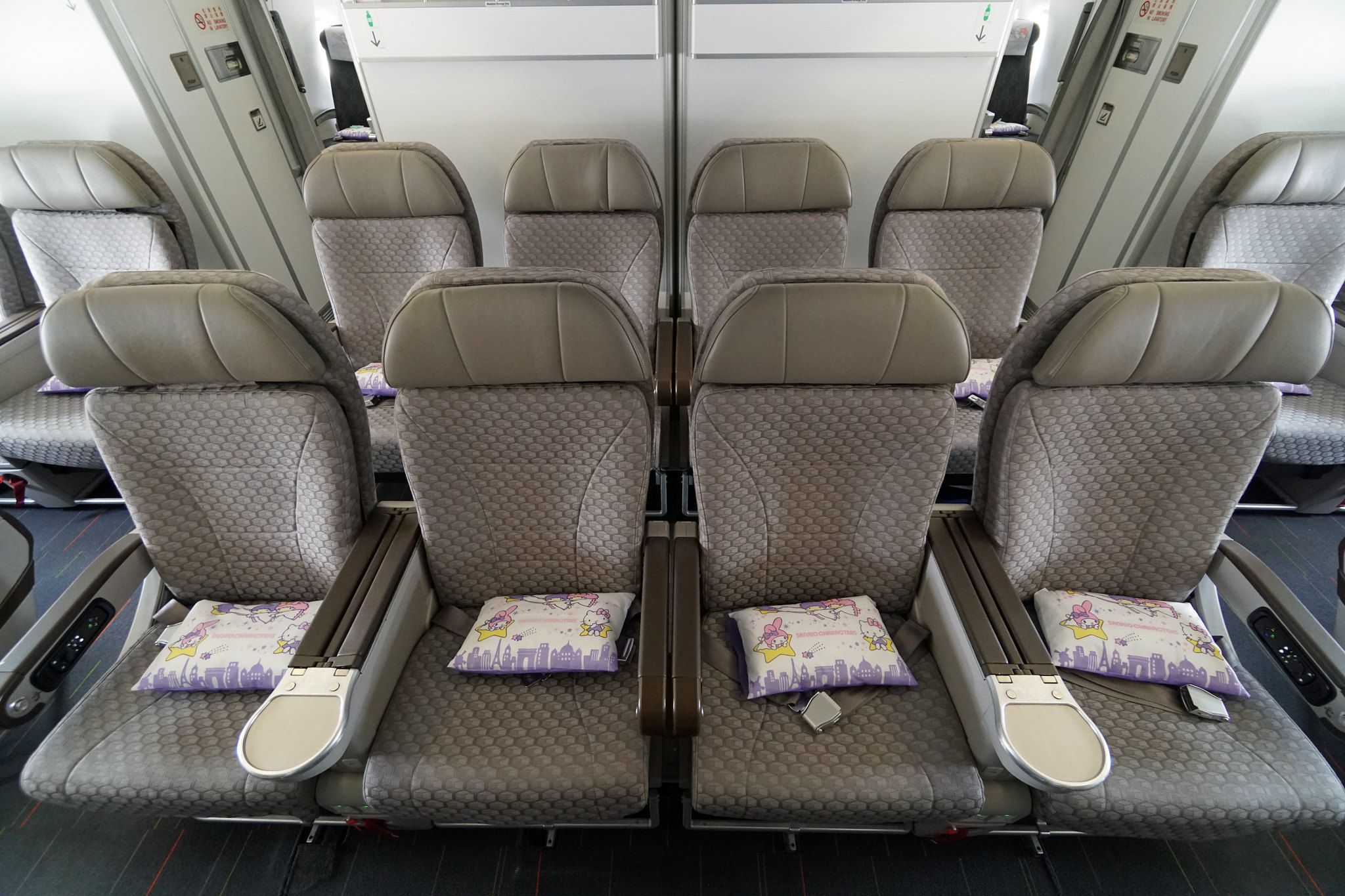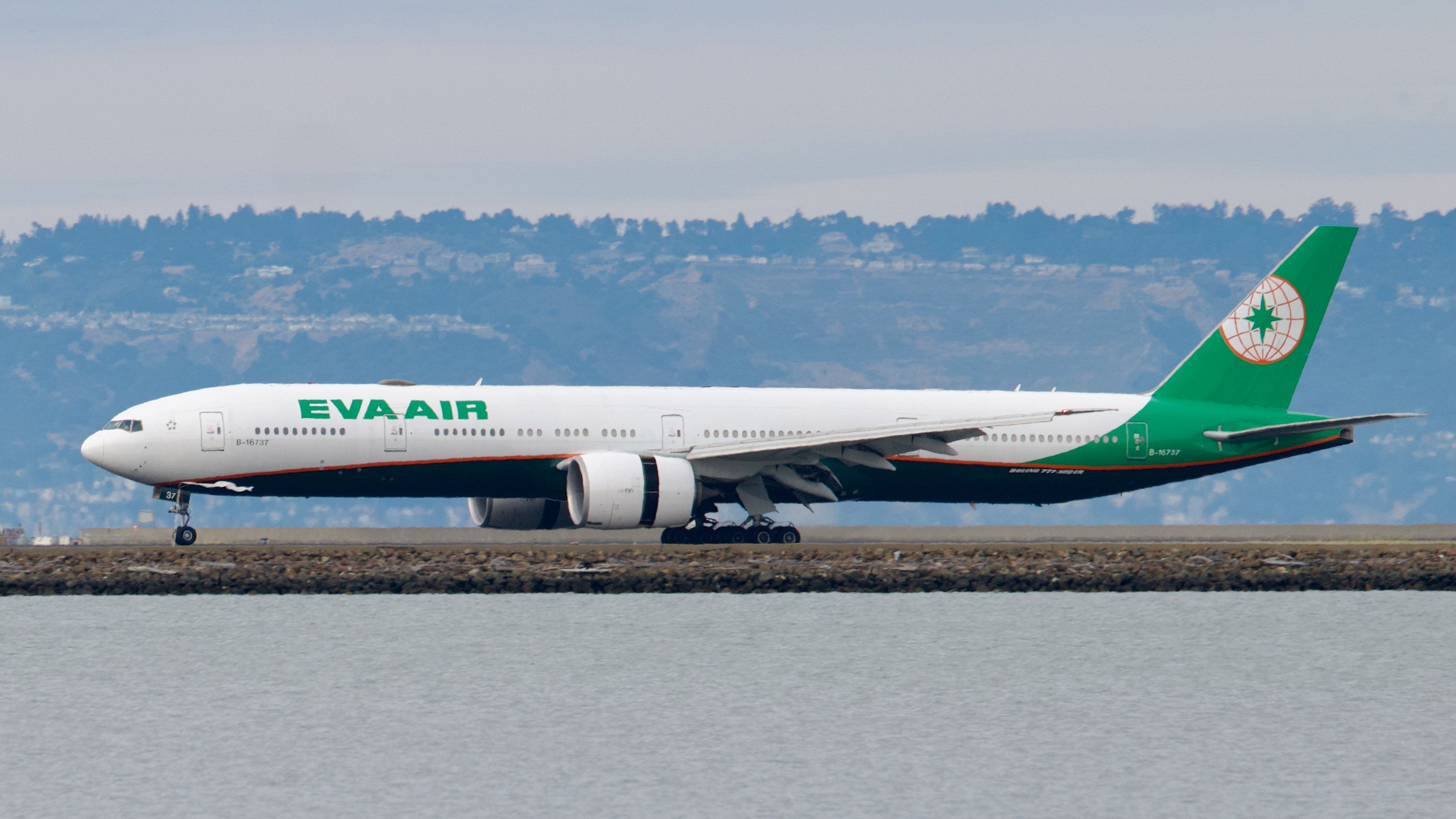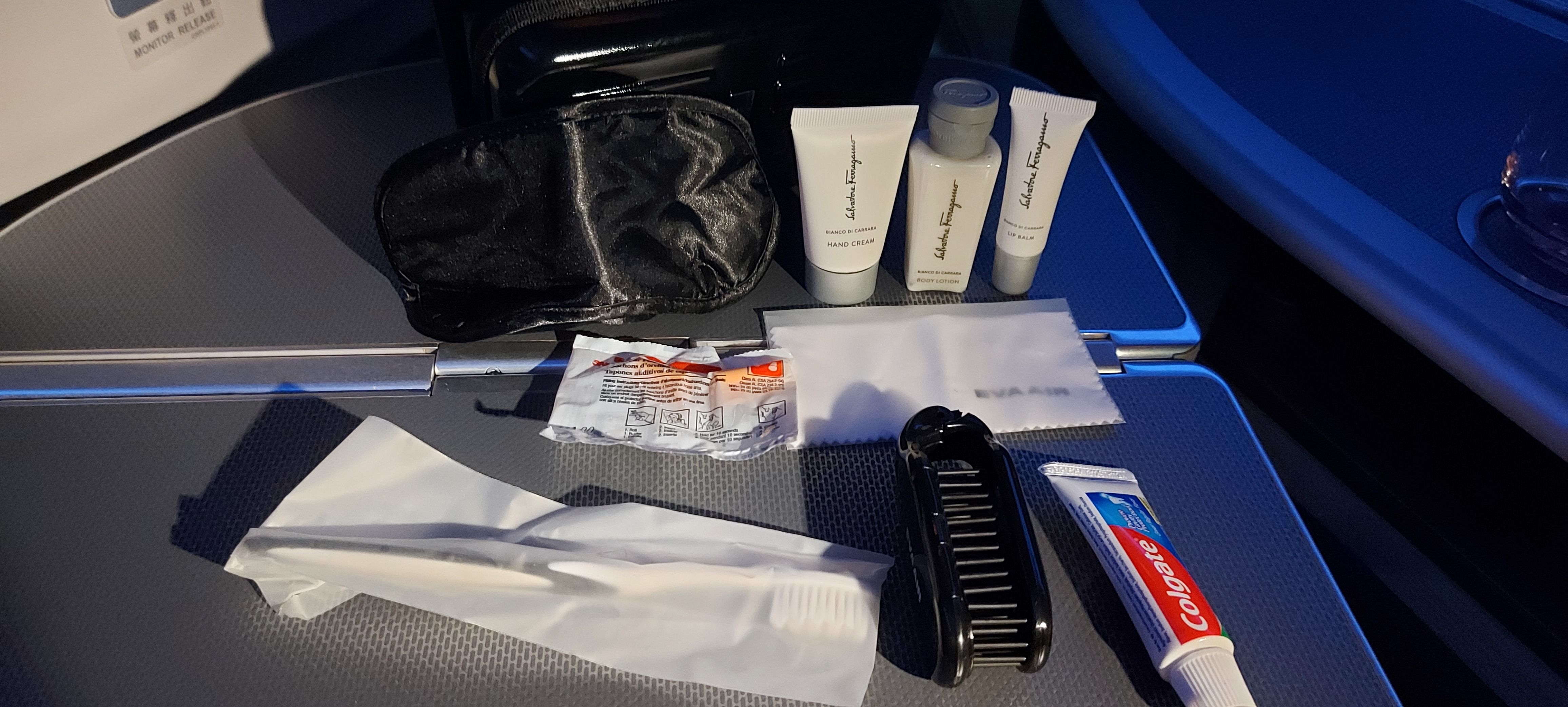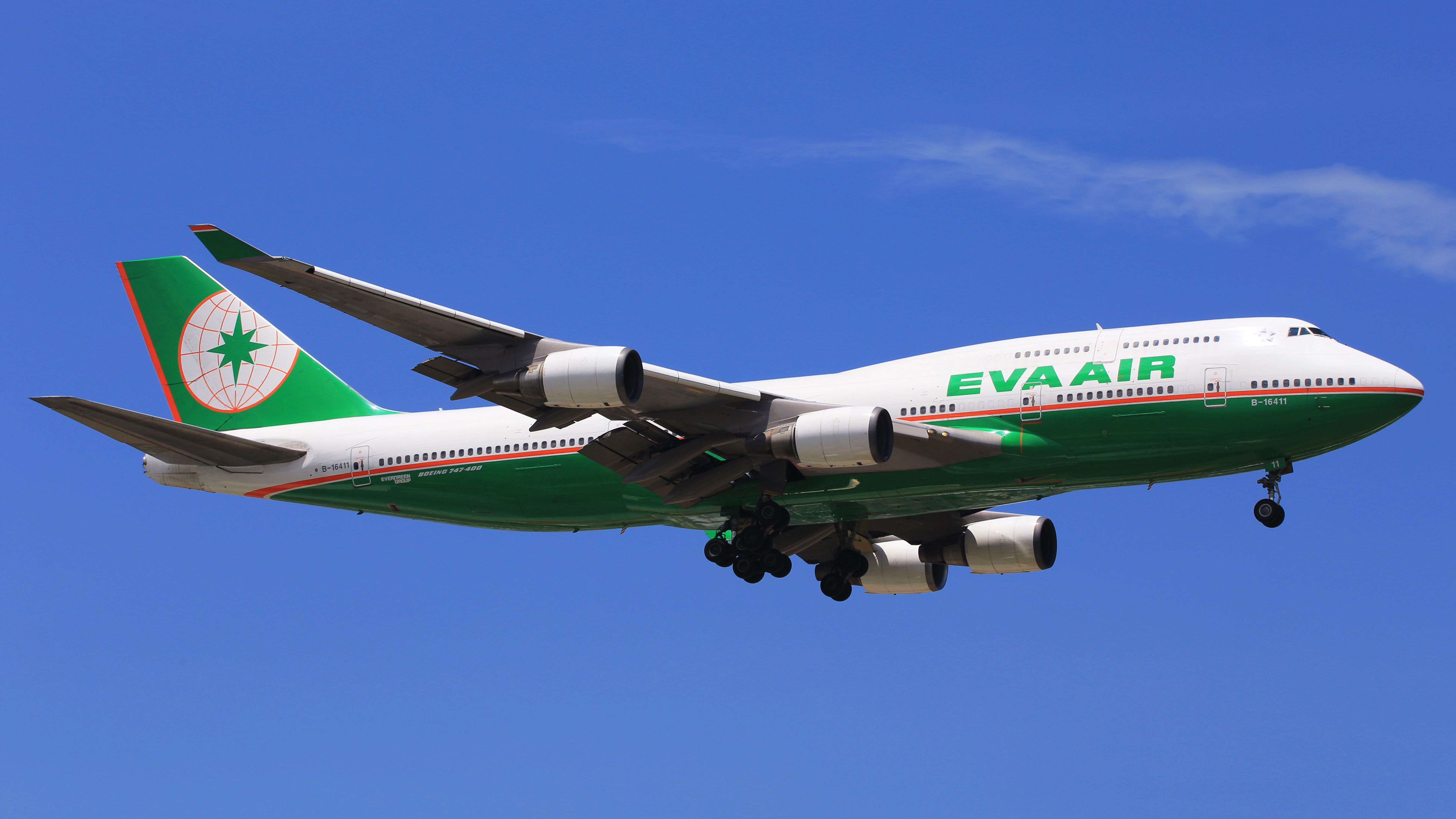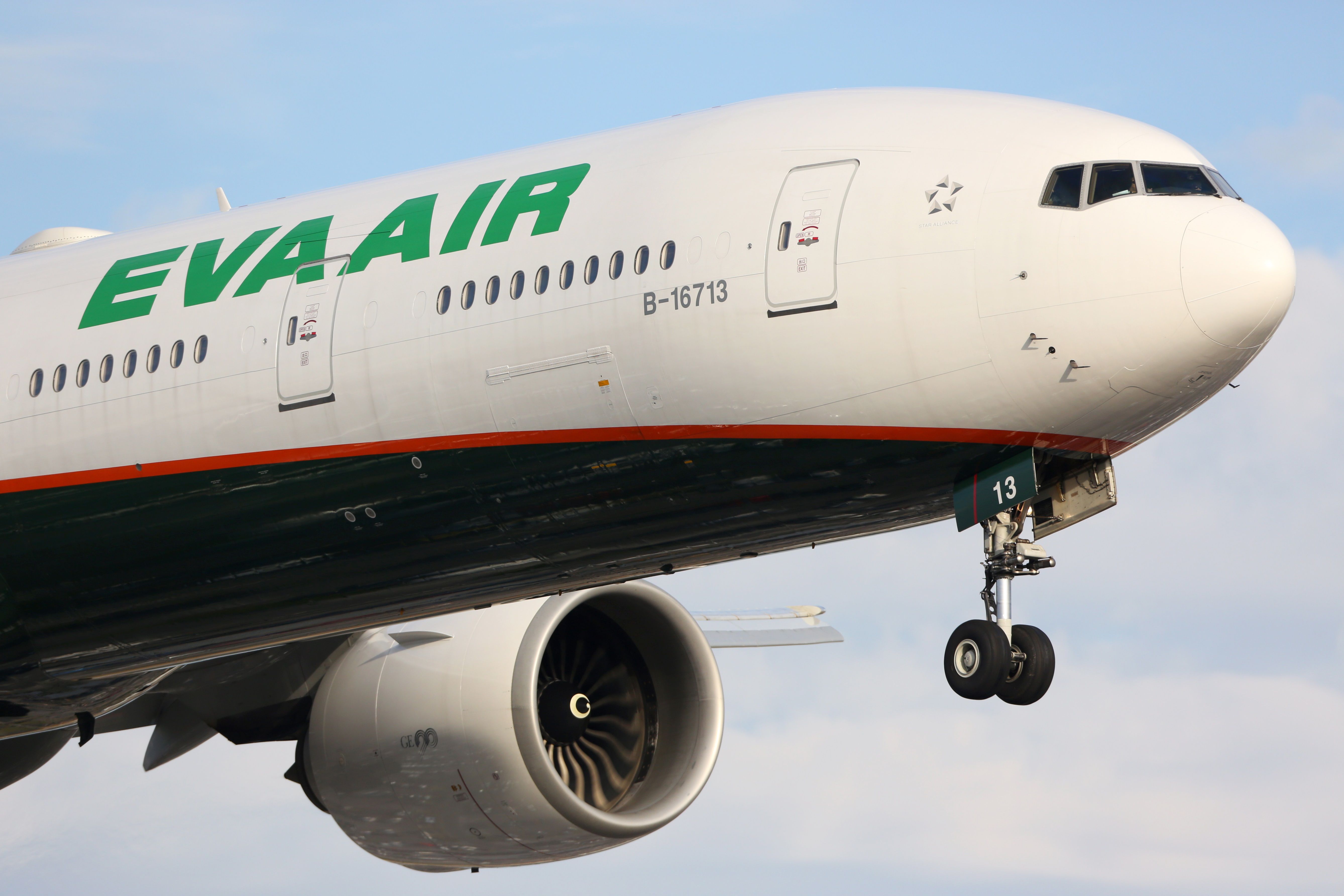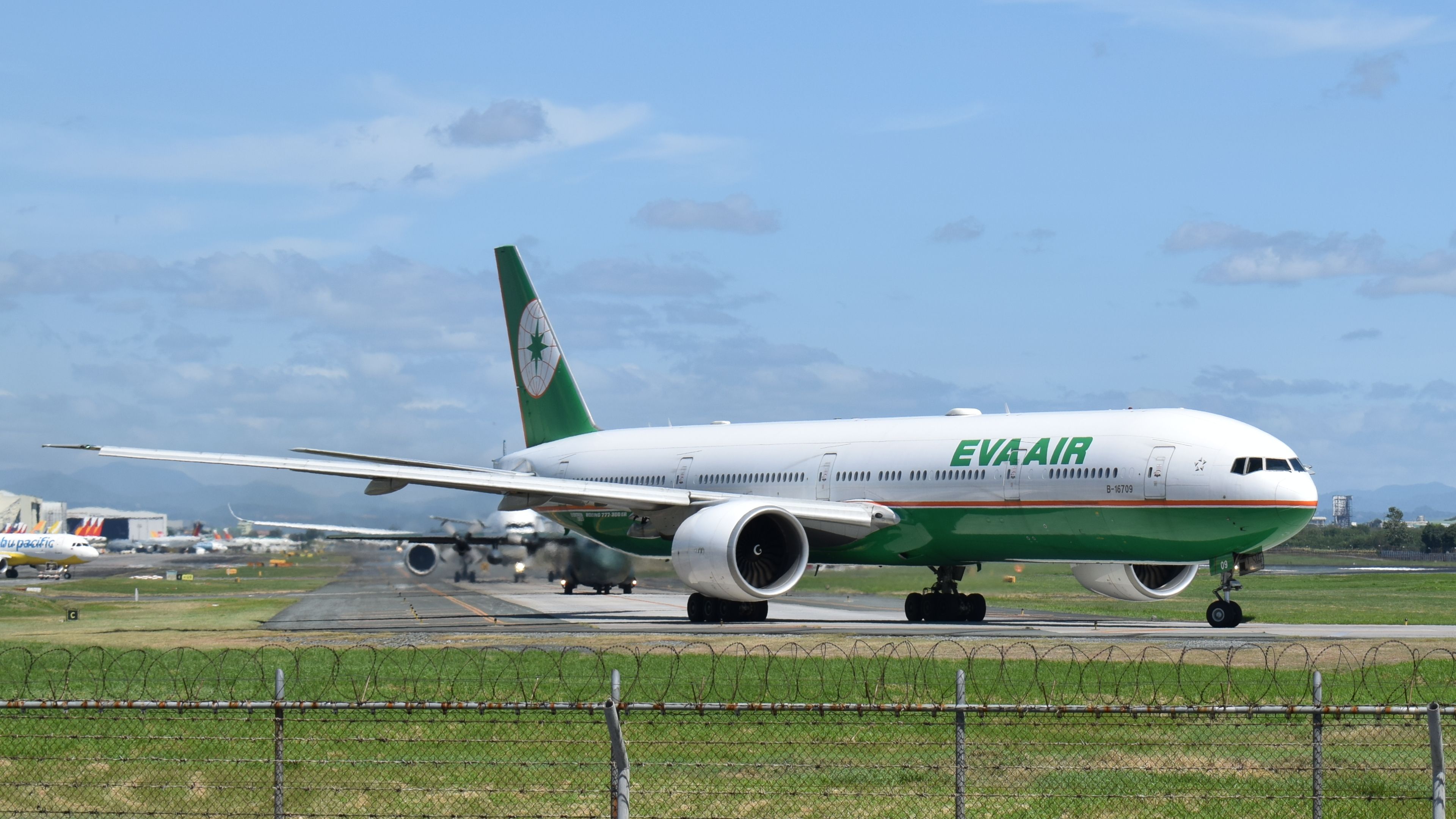Summary
- EVA Air launched the world's first premium economy seating in 1992, offering extra legroom and comfort.
- The premium economy class was initially named "Evergreen Class" but was later rebranded as premium economy.
- EVA Air's Boeing 777-300ERs feature premium economy seats, offering entertainment and upscale meals.
While many airlines offer premium class seating today, the idea of offering a class of seating somewhere in between economy class and business class came about in the early 1990s. Before that, most airliners were configured with two cabins, first and economy.
The forerunner to what would become a premium economy was called the "business class" by British Caledonian, who offered spacious seats and better meals on flights between London and New York in 1978.
In December 1992, after receiving its first Boeing 747-400 from the Seattle planemaker, EVA Air became the world's first airline to offer premium economy seating.
The first premium economy flights were between Taipei and Los Angeles
The first flights with aircraft configured with a premium economy class were between Taipei-Taoyuan International Airport (TPE) and Los Angeles International Airport (LAX) in the United States. A year later, in 1993, EVA Air began offering premium economy seats on flights from Taipei-Taoyuan International Airport (TPE) to the following destinations:
- Seattle–Tacoma International Airport (SEA) in Washington State
- John F. Kennedy International Airport (JFK) in New York
- Bangkok Don Mueang Airport (BKK) in Thailand
- Vienna International Airport (VIE) in Austria
Initially called "Evergreen Class," EVA Air changed the name to premium economy, and just like the way business class evolved, other airlines soon followed. The idea was that people who could not afford business class fares might be willing to pay a little extra for a seat with more legroom on long-haul flights.
EVA Air premium economy
Sadly, flying on an EVA Air premium economy ticket does not come with lounge access or priority boarding. The first passengers to board are EVA Air Royal Laurel Class, followed by EVA Air Premium Laurel Class. Because EVA Air boards its economy class passengers from the rear of the aircraft, many regular economy passengers board before premium economy passengers. On its Boeing 777-300ERs, EVA Air has 56 seats in a 2-4-2 configuration.
The seats in premium economy are plush and spacious, with plenty of legroom. Each premium economy seat has ample legroom and is 19.5 inches wide with a pitch of 38 inches. The seats feature an 11-inch LED touchscreen and an extensive library of television shows and movies. To help ensure a high-quality inflight entertainment experience, all premium economy passengers are provided with noise-canceling headphones.
Amenity kit
Bringing a touch of business class to the premium economy offering, EVA Air gives passengers an overnight amenity kit that contains moisturizing cream and lip balm, a toothbrush, toothpaste, socks, a comb, earplugs, and a sleep mask. Premium economy passengers are also given a fluffy pillow and a warm blanket.
Internet
All EVA Air premium economy passengers are offered 30 minutes of complimentary browsing and can then pay $4.95 for 30MB or $14.95 for 100MB, $29.95 for 300MB, and $39.95 for unlimited use.
Eva Air's premium economy food offerings
Using the EVA Air App, you can select your inflight meals up to two weeks before your flight. EVA Air uses Michelin-star chefs to create unique seasonal meals served with selected red/white and sparkling wines for its menus. With EVA Air being a Taiwanese airline, all meals onboard tend to be influenced by Chinese cuisine, but there are Western options available.
A sample meal in EVA Air premium economy
- Appetizer: Smoked duck breast with mango salsa and papaya salad.
- Main course: Stir-fry prawn noodles with a spicy chili sauce.
- Desert: Fruits and a citrus-flavored cheesecake.
- Beer and non-alcoholic drinks are also available.
EVA Air also serves breakfasts on its overnight long-haul flights.
All about EVA Air
In the late 1980s, the chairman of the Taiwanese container transportation and shipping company, the Evergreen Marine Corporation, Chang Yung-fa, announced his ambition to establish Taiwan's first privately owned international airline. In 1988, the Taiwanese government decided to liberalize the country's airline industry and allow any company with the know-how and financial backing to begin international flights from the island state.
After receiving regulatory approval, Evergreen Airways was established in March 1989. However, the name was too similar to the unrelated Evergreen International cargo airline. To avoid any confusion, Evergreen Airways changed its name to EVA Air. In October 1989, the newly formed airline ordered some of its Boeing 747-400s and McDonnell Douglas for its MD-11 tri-jet widebody airliners.
EVA Air begins Asia flights using Boeing 767s
While waiting for the new aircraft, EVA Air began operations on July 1, 1991, using a small fleet of Boeing 767-300ER aircraft configured in two classes. EVA Air's initial destinations that it flew from Taipei-Taoyuan International Airport (TPE) were:
- Bangkok Don Mueang Airport (BKK) in Thailand
- Seoul Incheon International Airport (ICN) in South Korea
- Soekarno–Hatta International Airport (CGK) in Jakarta, Indonesia
- Singapore Changi Airport (SIN) in Singapore
- Sultan Abdul Aziz Shah Airport (SZB) in Kuala Lumpur, Malaysia
By 1992, the airline had expanded to Europe, adding the Viennese capital of Vienna to its international network. After receiving its first 747-400 from Boeing in December 1992, EVA Air began flying transpacific flights from Taipei to Los Angeles International Airport (LAX) in the United States.
By 1994, EVA Air was flying to 22 international destinations from Taipei, carrying over three million passengers. After turning a profit a year earlier than expected in 1995, EVA Air began dedicated cargo flights using McDonnell Douglas MD-11 freighters between Taipei and the following airports:
- Singapore Changi Airport (SIN) in Singapore
- John F. Kennedy International Airport (JFK) in New York
- Los Angeles International Airport (LAX)
- Penang International Airport (PEN) in Malaysia
- San Francisco International Airport (SFO) in California
In 2000, EVA Air decided to overhaul its fleet of widebody long-haul aircraft and became the launch customer for the Boeing 777-300ER when it ordered four aircraft and a further eight options. In 2001, the Taiwanese airline ordered its first aircraft from European planemaker Airbus, the Airbus A330-200. The plan was to use the Boeing 777s on long-haul flights to the United States and Europe and the Airbus A330s for large-capacity flights within Asia.
By 2004, EVA Air had converted its eight Boeing triple seven options into firm orders, with its new flagship aircraft entering service in 2005. At the same time, the airline decided to completely revamp its cabins, offering fully laid flat seats in business class and upgrading its premium economy offering.
Over the coming years, EVA Air grew and became the island's second-largest airline after state-owned China Airlines. Rated as a 5-star airline by Skytrax, today EVA Air flies to 40 destinations in Asia, Australia, Europe & North America.

